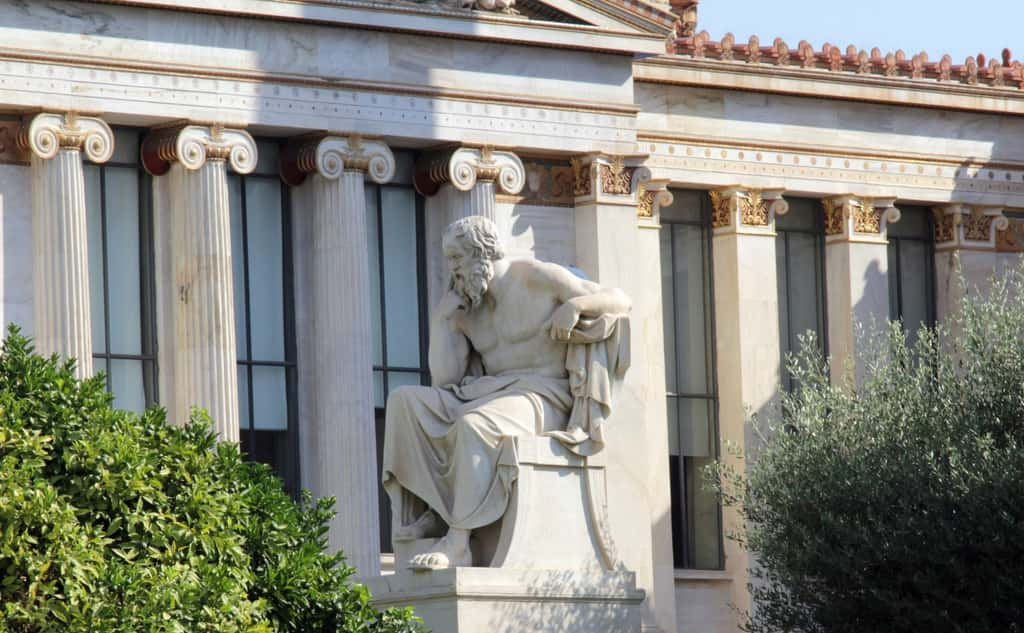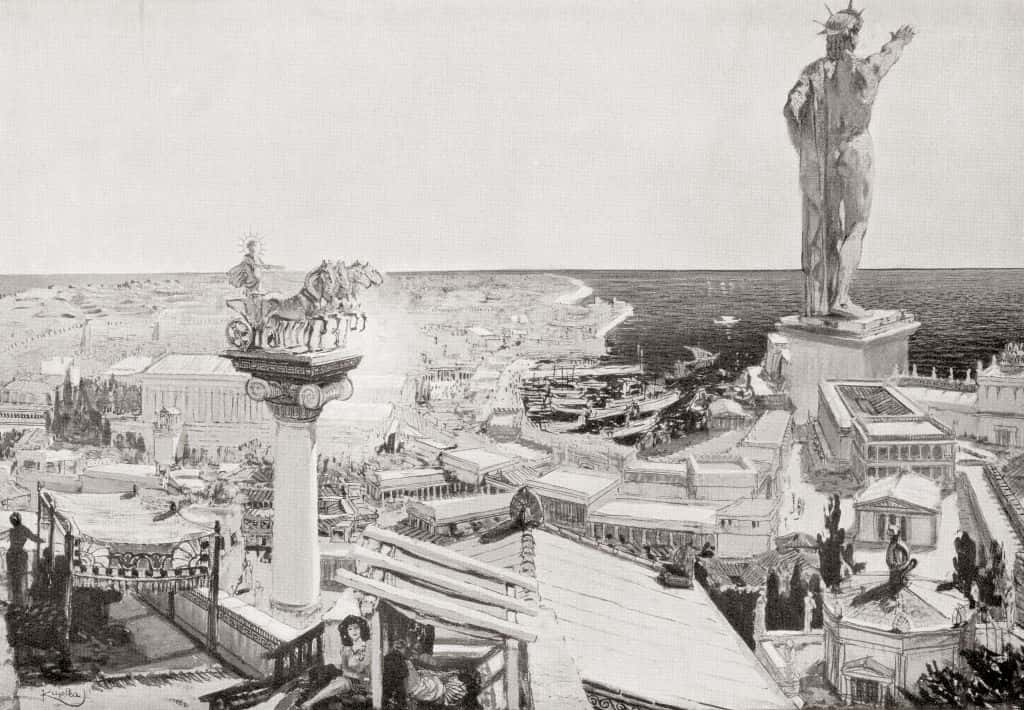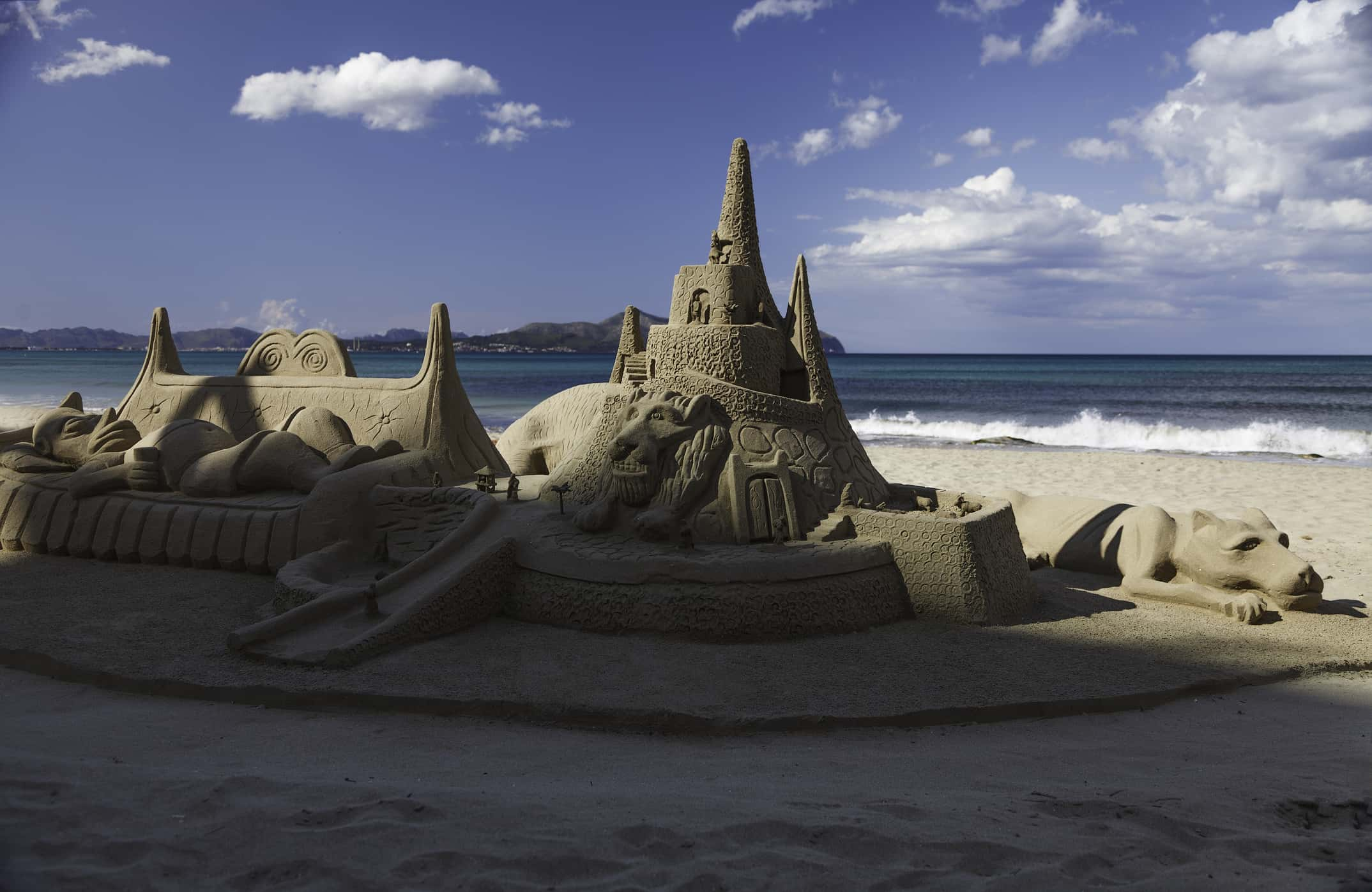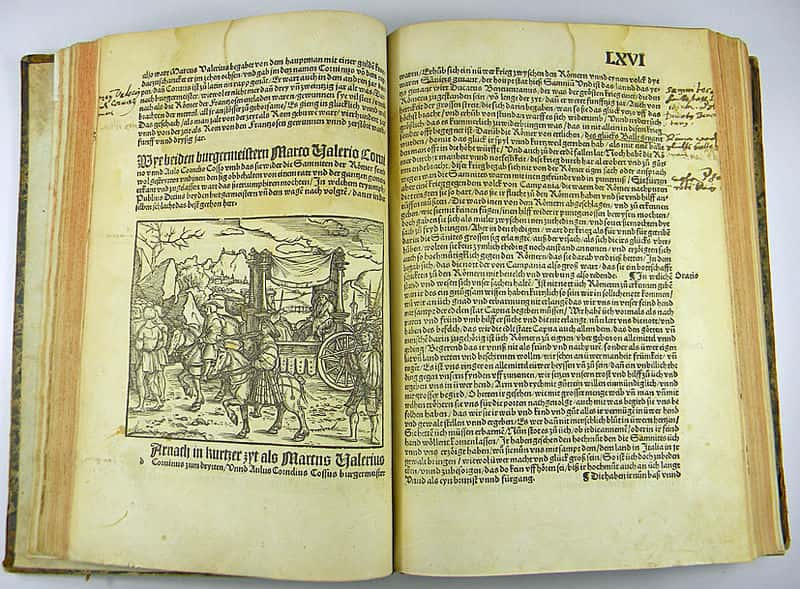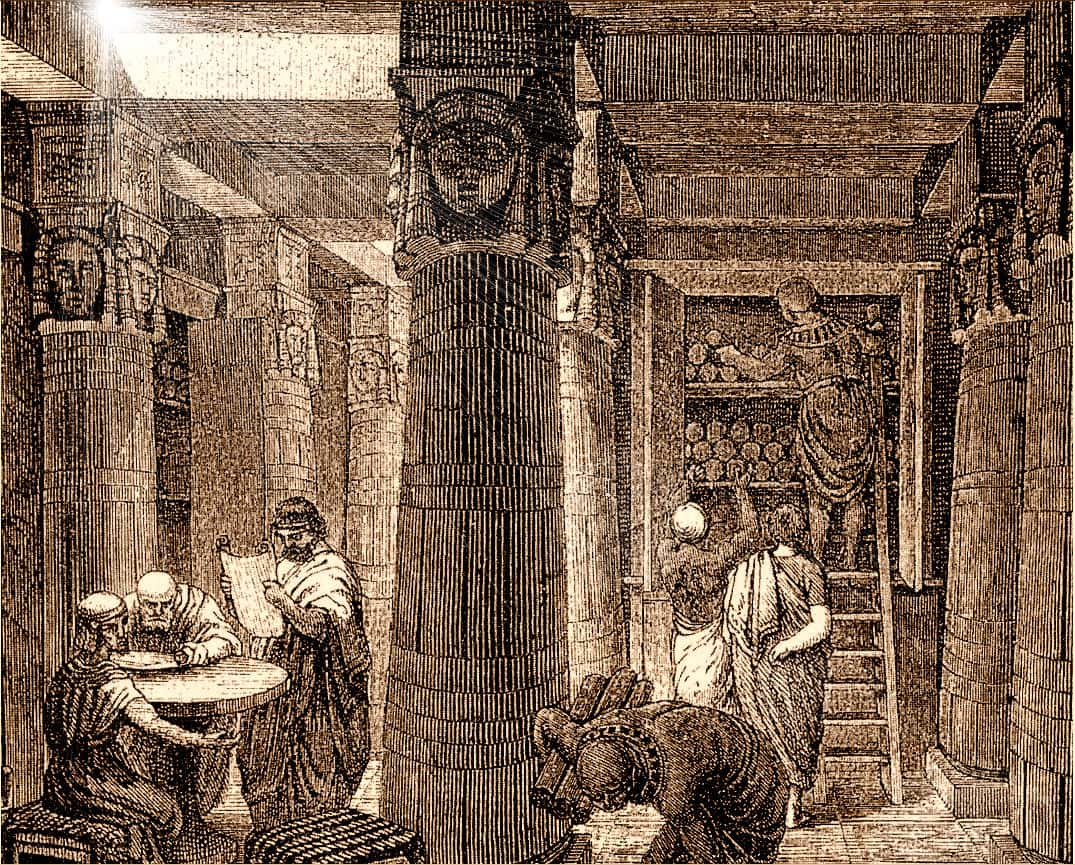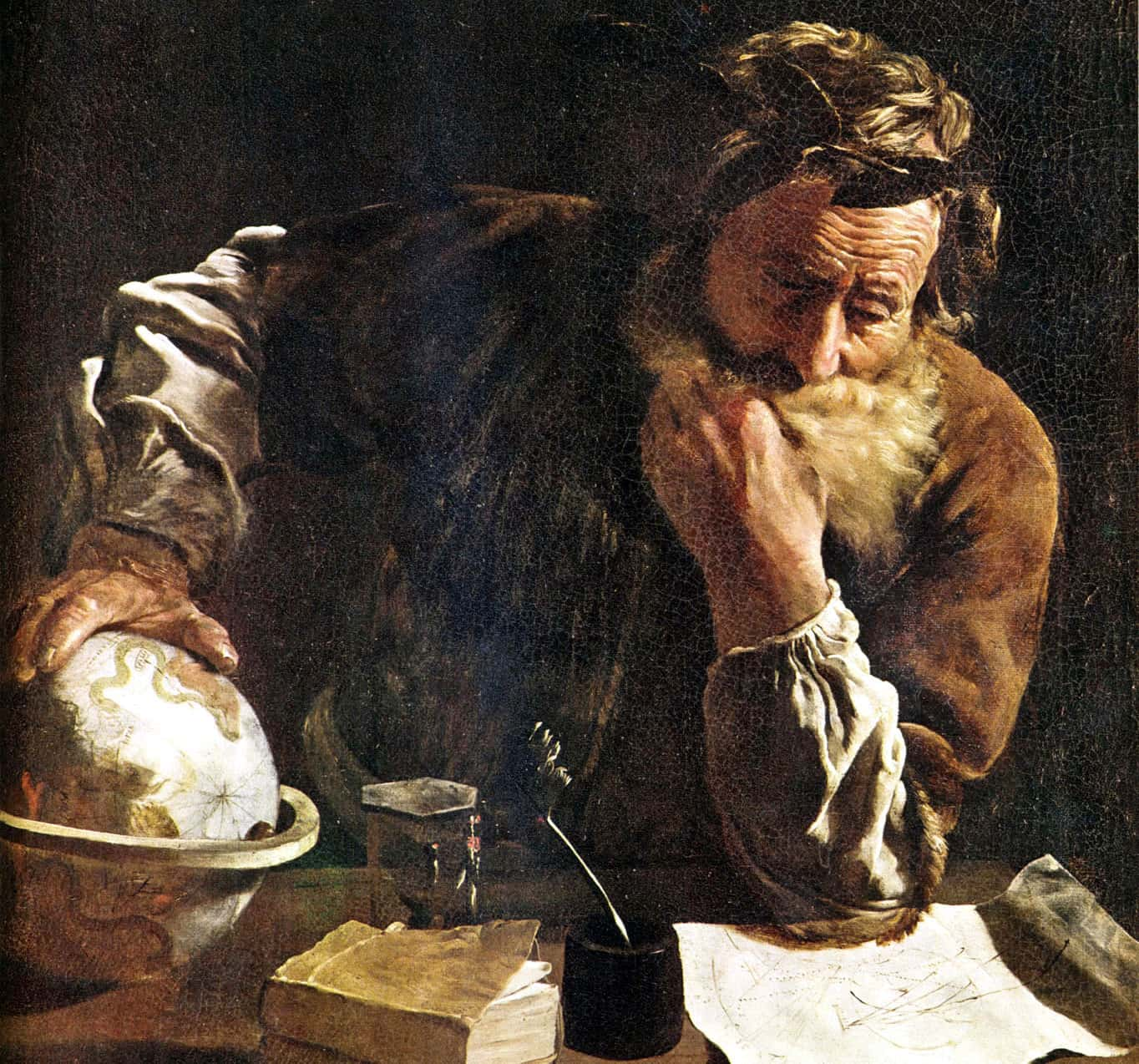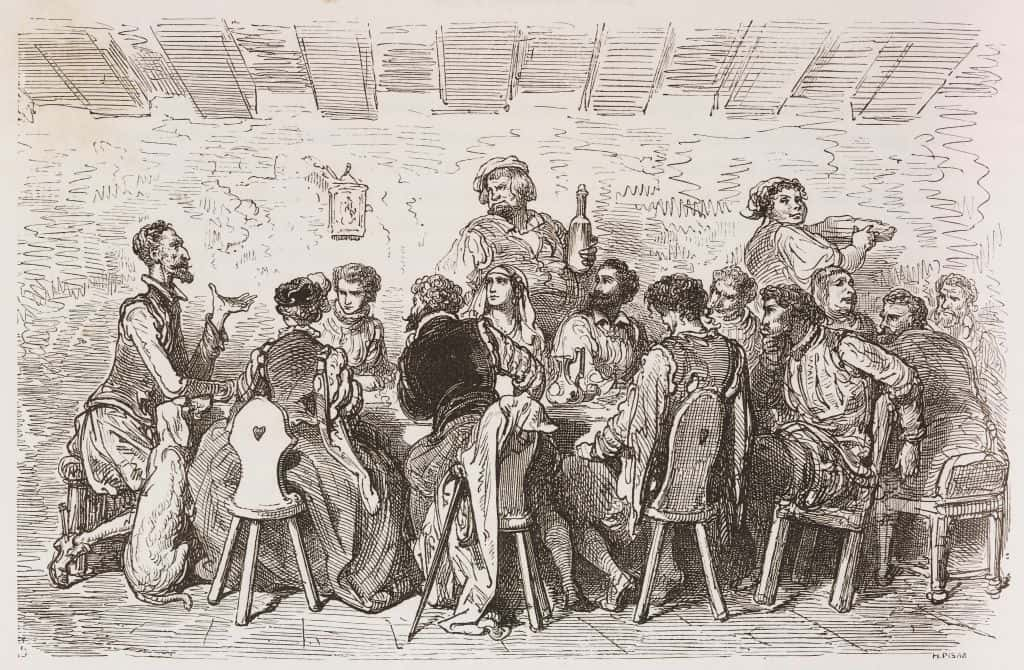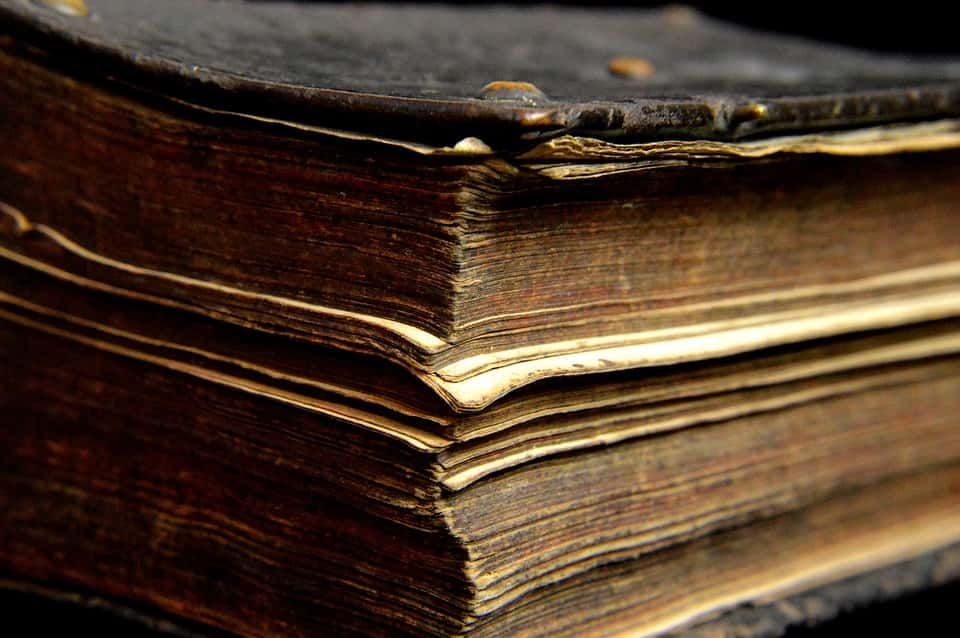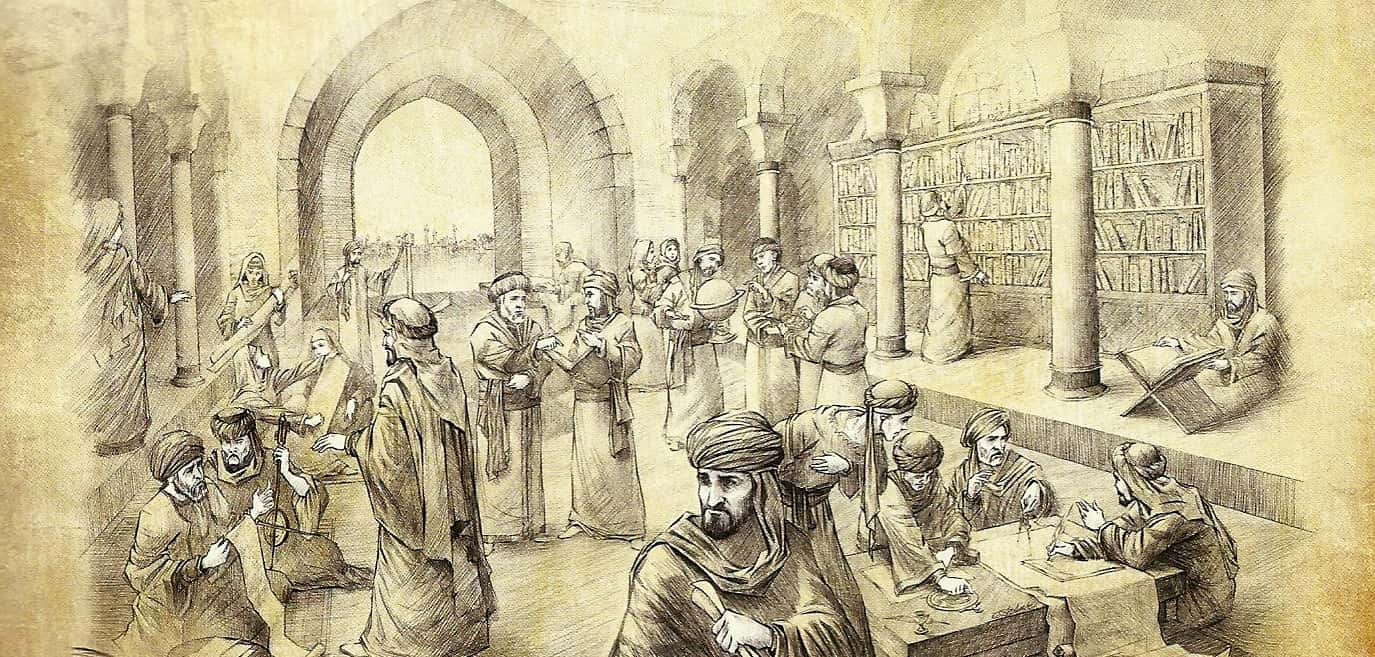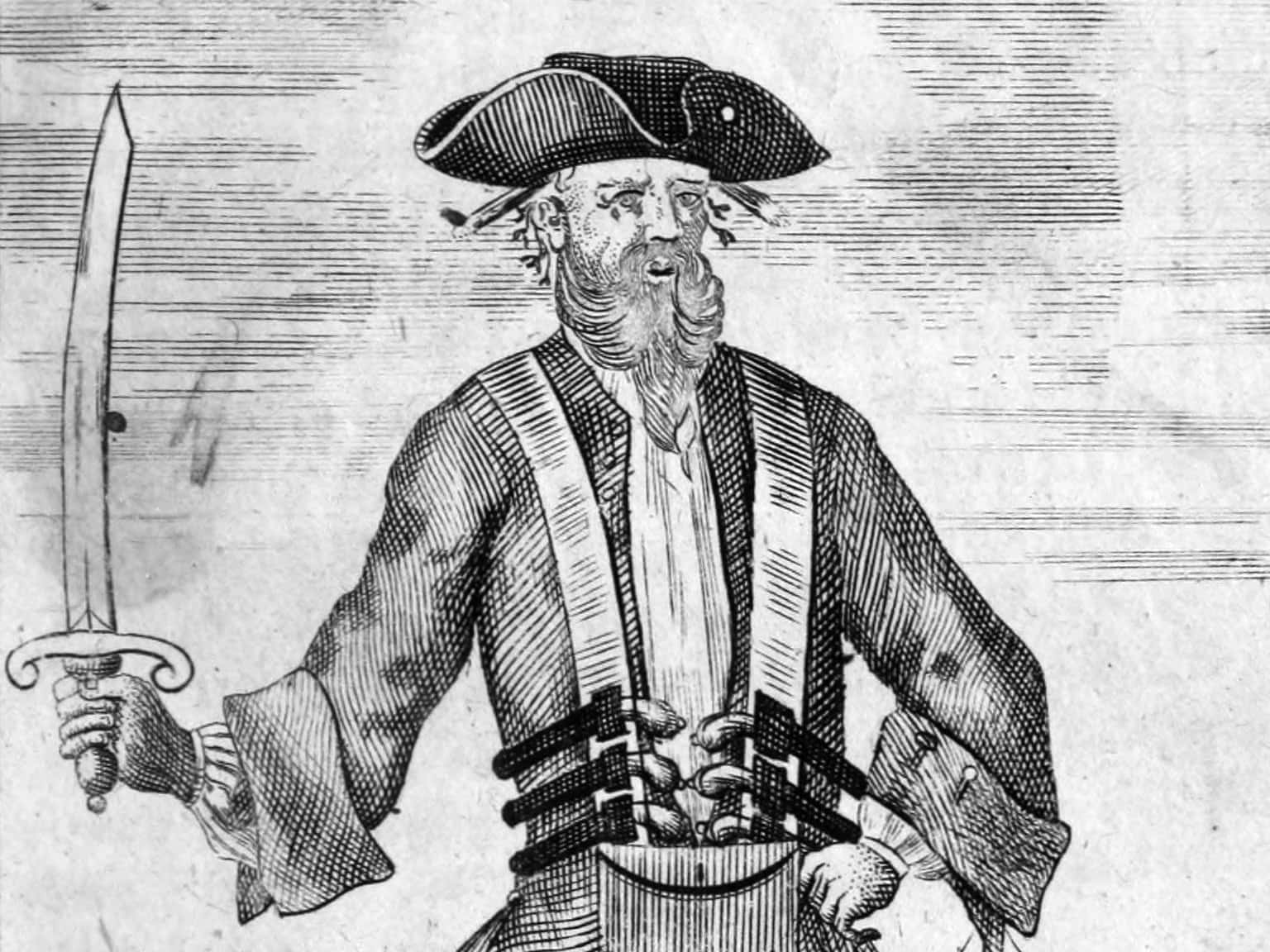“History never really says goodbye. History says, 'See you later.'” —Eduardo Galeano
We lose things. That’s just how it goes. Sometimes the things we lose are trivial, and sometimes the things we lose were monumental, and forever shaped the course of history—even if we've since forgotten.
Lost History Facts
21. D’oh!
According to Aristotle, what the Iliad and Odyssey were to tragedy, Margites was to comedy. Homer’s first written work, Margites was a comedic epic poem, now lost to history. What do we know of it is from Plato and Aristotle: it followed the trials of a fool who “knew many things, but all badly.” Hm, sounds like another Homer we know.
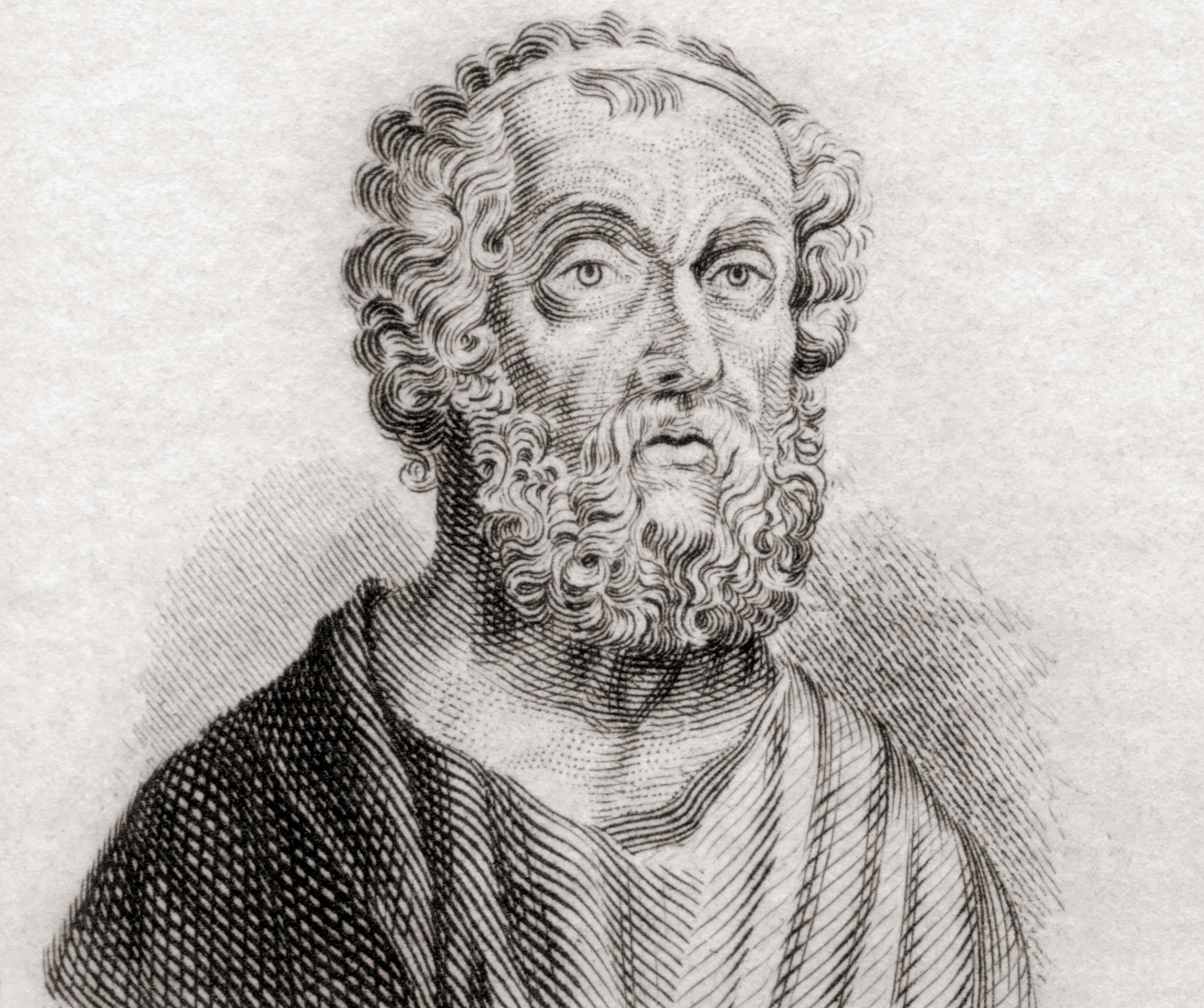 Getty Images
Getty Images
20. Plato’s Lost Tapes
Plato’s transcriptions Timaeus and Critias led to the golden age of Greek philosophical thought. However it is speculated that there was a third dialogue called Hermocrates. Whether or not he ever wrote this final dialogue is lost to history but was likely to further his ideas on the fundamental nature of the universe and human society.
19. Where’d My Books Go?!
Aristotle is responsible for the first-known writings on logic; he is also one the founders of Western philosophy, and helped keep the teachings of Plato and Socrates alive. It is thus an understatement to say he is one of the world’s most influential figures—but he could have had an even greater impact: two-thirds of Aristotle's work is actually thought to have gone missing.
18. This Rhodes Led to Destruction
The Colossus of Rhodes is one of the Seven Wonders of the Ancient World. It was a 33-meter bronze statue (about the size of the Statue of Liberty) of the sun god Helios, which looked down upon the Greek city of Rhodes. It stood for only 54 years before snapping at its knees during an earthquake. Probably not the fate the sculptor hoped for.
17. The Lost Ark
The Ark of the Covenant was an ornate wooden chest built by the Israelites in God’s desired design as God relayed this design to Moses. God must have loved gold: this thing was decked out. The Ark was schlepped by the Jews on their 40 years wandering the desert and possesses the power to defeat those who don't believe in God’s power. After a tumultuous journey, the Ark disappears around 587 BC during a Babylonian siege of Jerusalem, never to be seen again.
16. Missing Texts of Biblical Proportions
You may have heard of the Bible. You may have also heard about books that were removed from the text—but there are also books that are completely lost. The more than 20 “lost books” are only known due to being referenced throughout the Bible, and include the “Book of the Battles of Yahweh,” the “Book of the Chronicles of the Kings of Israel,” and the “Book of the Chronicles of the Kings of Judah.”
15. Origins of Atlantis
Plato's Timaeus and Critias also tell the allegorical story of Atlantis. Atlantis was home to a flourishing civilization, living in a highly advanced utopian society. Over time, the people were gradually corrupted, and as punishment from the gods, the island was sunk. The story was likely a vehicle for Plato to explore his themes of the divine versus human nature, but this hasn’t stopped people from fantasizing about the possibility of its existence, and there are still attempts to uncover the history of Atlantis from the ocean's depths. More credibly, some scholars have theorized about what real-world examples Plato might have based Atlantis on.
14. Silencing Sex
The Gospel of Eve was a Gnostic text that was destroyed for its apparent perversion. It was claimed to have promoted free-love in a way that could even be considered forward thinking in 2017. A 4th-century man by the name of Epiphanius disavowed it and convinced the church to destroy copies of the book, ushering in an age of sexual repression.
13. Roman Crumbs
The most detailed history of Rome was written by Livy in Ab urbe condita libri—except we only have about 25% of the total work. Livy wrote 142 volumes (look what people did without the internet) on the centuries of Roman rule, but after the West fell much of his work was lost or destroyed. The volumes that did survive formed a basis for the Renaissance. Without Livy’s writings, we’d know a only a sliver of Roman history, so it’s hard to imagine all that we’re missing.

History's most fascinating stories and darkest secrets, delivered to your inbox daily.
12. Book Burning
The legend surrounding the Library of Alexandria is a phantom that haunts the depths of human knowledge. Built to accumulate all the world’s knowledge, the library was one of the most important libraries of the ancient world. Organized by Demetrius of Phaleron, a student of Aristotle, it was a research home for the greatest thinkers of the time, including Archimedes and Euclid. It suffered (according to different sources) a big fire or many fires, and was destroyed along with all the knowledge it contained.
11. Archimedes and His Circles
Speaking of Archimedes, the father of mathematics was so obsessed with spheres that his last words are said to have been "do not disturb my circles" (Archimedes was killed by a solider while contemplating a mathematical diagram). Before his death, he was working on the book On Sphere-Making. The book could have contained a blueprint of the mysterious Antikythera mechanism and was a study on mapping the stars and calculating the movements of the planets. Giving the profound surviving work of Archimedes, it’s safe to say this text would have had an incredible impact on civilization if it were not destroyed during the Roman burning of Alexandria.
10. Oh, Cardenio, Where Art Thou?
Academics theorize that after reading a translation of the first modern novel, Don Quixote, Shakespeare wrote a play inspired by the character Cardenio. Considered the holy grail of Shakespearean plays, Cardenio was performed by the London theater company King’s Men for King James in 1613, and then...poof! It was gone.
9. A Whale of A Story
Another lost book of an English literature master, The Isle of the Cross was a rejected text by Herman Melville, which he likely destroyed. After the critical failure of both Moby Dick and Pierre, it was believed Melville retreated into a depression and stopped writing. However, the discovery of this book, mentioned in letters, proves he did not. A story concerning the enduring strength and patience of women, we will never know what else he was capable of writing at the height of his literary powers.
8. Mongol Destruction
During the Islamic Golden Age, the House of Wisdom in Baghdad was a centre for learning. The library was destroyed by a Mongol siege in 1258. As the Mongols were the badasses of the time, they threw the books into the Tigris river, which would run black for months after the sacking.
7. Wait, There’s More?
Homer’s Iliad and Odyssey are only two of the original eight epic poems that contain the story of Troy. We are only aware of the lost poems' existence (which were written by writers other than Homer) due to contemporary references.
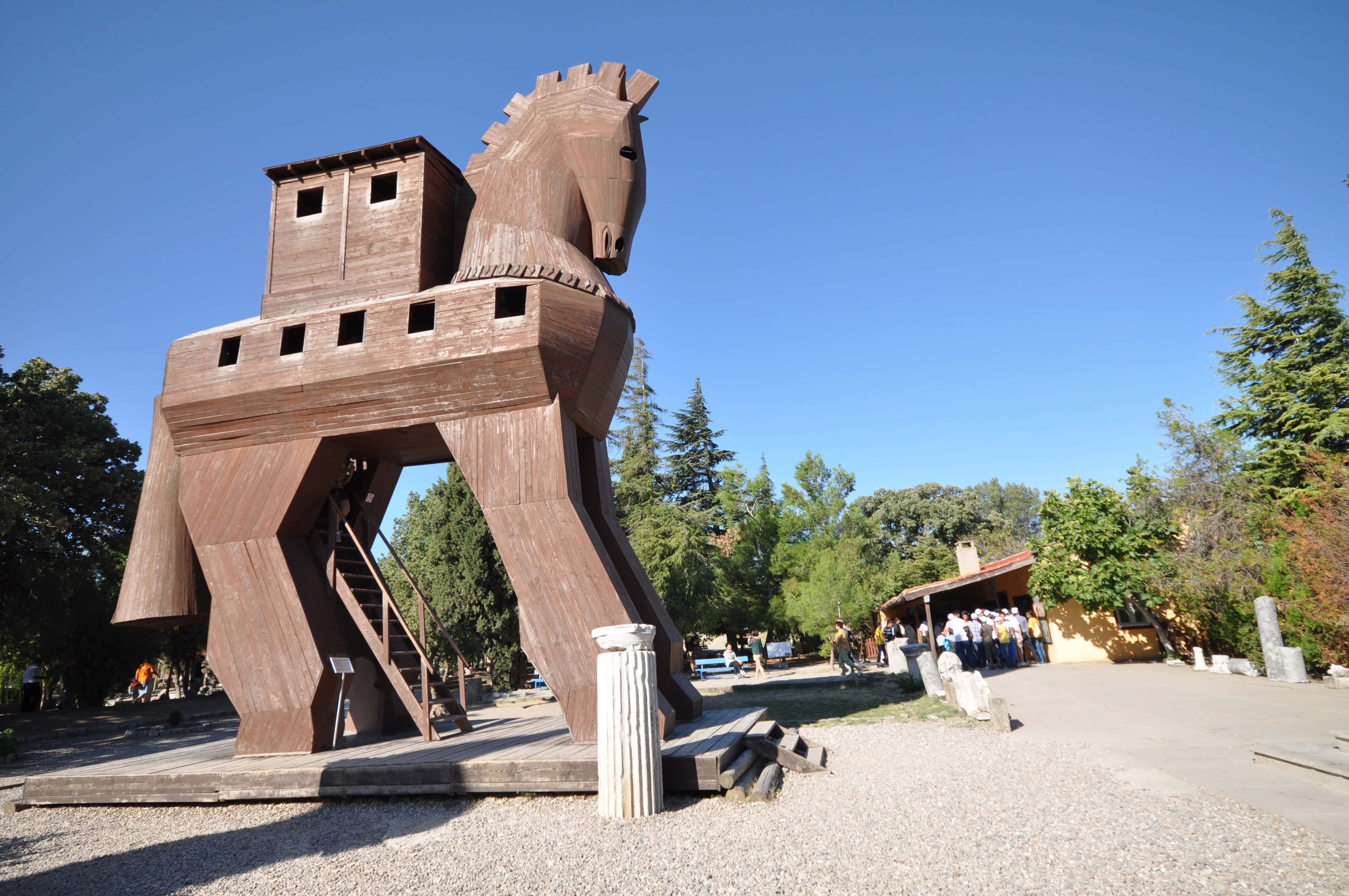 Wikimedia Commons, Jorge Láscar
Wikimedia Commons, Jorge Láscar
6. Yongle, Gone Wrong
Way before Gutenberg was printing, the Chinese were printing like crazy. The Chinese had a wealth of ancient knowledge, history, and science, and the Yongle Emperor of the Ming Dynasty wanted to produce an Encyclopedia in 1403. 2,169 scholars worked on the project and ultimately produced 11,095 volumes by 1408. Unfortunately, after the fall of the Ming Dynasty and numerous wars, uprisings, and invasions, only 400 volumes remain today.
5. Where’s The Treasure At?
If you’re the most famous pirate in the world, you need a good name, which is probably why the British Edward Teach went by Blackbeard. After years of piracy along the West Indies, he amassed a staggering collection of treasures, which he claimed to have hidden. After dying in battle, Blackbeard was decapitated and his head was mounted on the bowsprit of a ship. The secret of the location of his treasure died with him.
4. Da Vinci’s Medusa
Many of Leonardo da Vinci’s works are lost to the winds of time, and his first Medusa shield is one of the most mysterious of all. Created in his youth and depicting the gorgon Medusa on a wooden shield, da Vinci's biographer Vasari claimed that it was been such a macabre masterpiece that da Vinci's father was frightened by it and sold it, in secret, to merchants. The shield inspired many 17th century painters, who actually saw it in the collection of Ferdinand I de Medici before it was lost, to try their hand at Medusa.
3. Stolen Treasure
After the Spanish conquest of the Incas, the Spanish accumulated a wealth of riches and historical treasures belonging to the Peruvian people. In 1820, Lima was on the edge of revolution, and the Spanish scrambled to protect “their” collection, entrusting it to sea captain William Thompson. Thompson, of course, escaped with the treasure into the jungle of Costa Rica and made off with an estimated $12-60 million worth of riches.
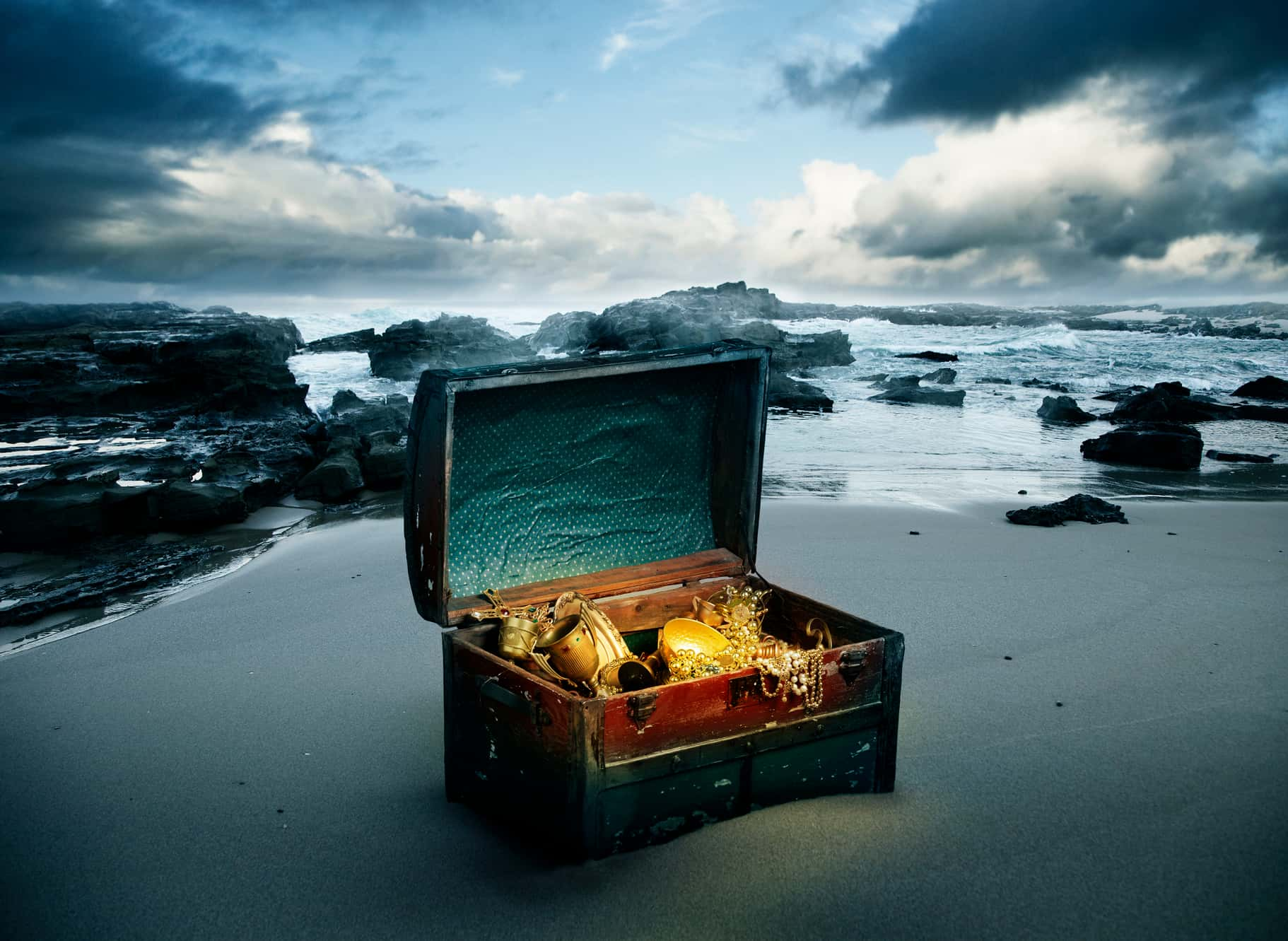 Getty Images
Getty Images
2. Those Damn Nazis
Referred to as the Eighth Wonder of the World, the Amber Room was a spectacular chamber in the Catherine Palace near St. Petersburg. The room was created with amber panels encrusted with mosaics of precious gemstones and metals. It was gifted to Peter the Great by Prussia and considered a Baroque masterpiece worth $500 million. It was a Russian national treasure—until the Nazis captured it in WWII. A replica was rebuilt in 2003 but rumors state that the original was destroyed by bombs, sank on a ship in the Baltic sea, or is even still in a forgotten Nazi bunker.
1. The Lost Dutchman's Mine
In the 1840s in the Superstition Mountains of central Arizona, a family worked a gold mine and shipped the gold back to Mexico until they were slaughtered by a group of Apaches and the mine was lost. In the 1870s, a man named Jacob “The Dutchman” Waltz was said to have located the mine aided by an original family member. With his health failing, Waltz is said to have described the mine’s exact location to a Phoenix-area woman who took care of him during his last days. She was unable to locate the mine herself, and though many have tried, no one has been able to verify the mine's existence since.


